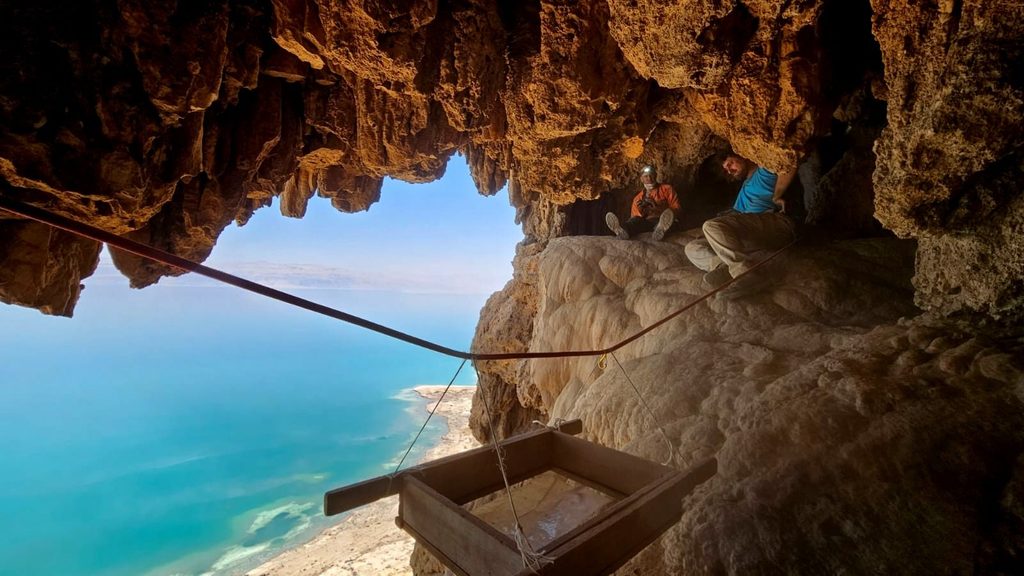Four 1,900-year-old swords preserved in their wooden and leather scabbards and a shafted pilum weapon were recently found in a cave overlooking the Dead Sea in Israel.
An archaeological study published last week suggests that the weapons were war booty and hidden in the cave by Jewish rebels during the revolt against Roman rule in Judea in 132 – 135 CE.
The study summarizes six years of archaeological surveys and excavations carried out in the Judean Desert caves, initiated by the Israel Antiquities Authority (IAA). Hundreds of caves have been investigated over the past years, and several archaeological excavations have been carried out in selected caves, with the aim of saving the archaeological remains from the hands of looters.
The excavations are a race against time. In the course of the project, the team also encountered tens of caves that have been plundered.
“Finding a single sword is rare—so four? It’s a dream! We rubbed our eyes to believe it,” said the archaeologists involved in the dig.
“This is a dramatic and exciting discovery, touching on a specific moment in time,” commented Eli Escusido, IAA Director. “Not all are aware that the dry climatic conditions in the Judean Desert enable the preservation of artifacts that do not survive in other parts of the country. The swords were still sharp as if they had only just been hidden away today.”
The weapons were discovered in a small hidden cave located in an area of isolated and inaccessible cliffs north of En Gedi, an oasis and ancient site in the Judean Desert Nature Reserve. Fifty years ago, a stalactite with a fragmentary ink inscription written in ancient Hebrew script characteristic of the First Temple period, was found in the cave.
Three of the swords were found with the iron blade inside the wooden scabbards. Leather strips and wooden and metal finds belonging to the weapons were also found in the crevice.
The swords had well-fashioned handles made of wood or metal. The length of the blades of three swords was 60–65 cm, their dimensions identifying them as Roman spatha swords, and the fourth one was shorter with a 45 cm long blade, identified as a ring-pommel sword. The initial examination confirmed that they were standard Roman swords.
Following the discovery of the swords, an archaeological excavation was undertaken in the cave by the IAA. The cave was excavated in its entirety, and artifacts dating to the Chalcolithic period (c. 6,000 years ago) and the Roman period (c. 2,000 years ago) were uncovered. At the entrance to the cave, a Bar-Kochba bronze coin from the time of the revolt was found.
The uprising, which took place after the destruction of the second temple in Jerusalem in 70 CE, was named after the rebel leader Simon Bar Kochba, a legendary figure who was seen by some as the promised Messias but fell on the battlefield after initial successes. The coins from the period were overstruck on Roman coins. Some coins with an image of the temple and the year of the uprising may indicate that he liberated Jerusalem.
The Brussels Times

